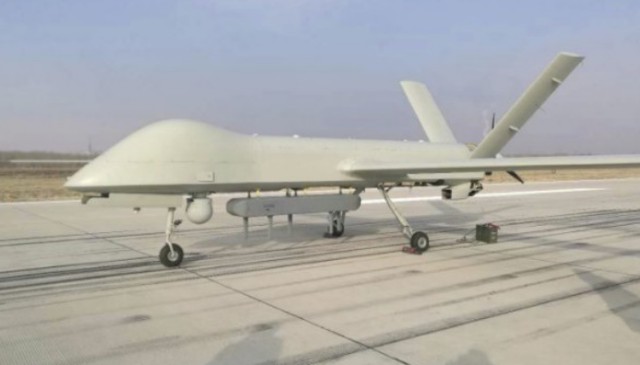China Academy of Aerospace Aerodynamics (CAAA), the flight technology development arm of defence prime China Aerospace Science and Technology Corporation (CASC), is developing a new and more capable variant of its strike-capable Cai Hong 4 (Rainbow 4, or CH-4) medium-altitude, long-endurance unmanned aerial vehicle (UAV) under the designation of CH-4C.
Company sources revealed that several of the enhancements planned for the new variant had been validated – alongside a new 100 kg-class laser-guided bomb (LGB) and new electronic reconnaissance payloads – during a six-day live-fire trial in north-western China in late January.
Although specific details of the CH-4C development could not be disclosed at this stage, Jane’s understands that new features will include an improved load carrying capacity and increased electrical power generation, as well as an updated data processing and electronic architecture. The baseline air vehicle’s build quality and flight control systems have also been upgraded to improve its ability to operate in adverse weather conditions.
“The updated electronic and power architecture enables a wider array of weapons and payloads to be integrated to the air vehicle, ensuring that it can readily accept next-generation technologies and remain relevant well into the future,” company officials explained. “The new architecture also facilitates the integration of third-party equipment that a customer may want the UAV to carry.”
CAAA’s engineers have also taken the opportunity to conduct integration tests on a new electronic reconnaissance pod, which was recently developed to fulfil an unspecified customer’s requirements. The payload is designed to be carried on the underbelly hard-points of CH-4 test vehicles configured for line-of-sight (LOS) and satellite communications-enabled operations.
Photo: Jane’s sources
Source: Jane’s 360

